Does your lower back round or butt drop at the bottom of your squats? Do you have low back pain, groin pain, hip pain or knee pain when squatting to full depth? If you answered YES, to any of these questions your squat mechanics need to be addressed. In this article we will dive into the common causes of spinal flexion or “The Butt Wink” during the squat and how it can cause other areas in the body to leak energy and cause pain.
First, let’s start with discovering the cause of this breakdown in biomechanics. Is it due to mobility, motor control or both? In my practice I always assess an individual’s mobility before anything else. If your soft tissues do not allow you to get into position then no amount of strengthening is going to change that.
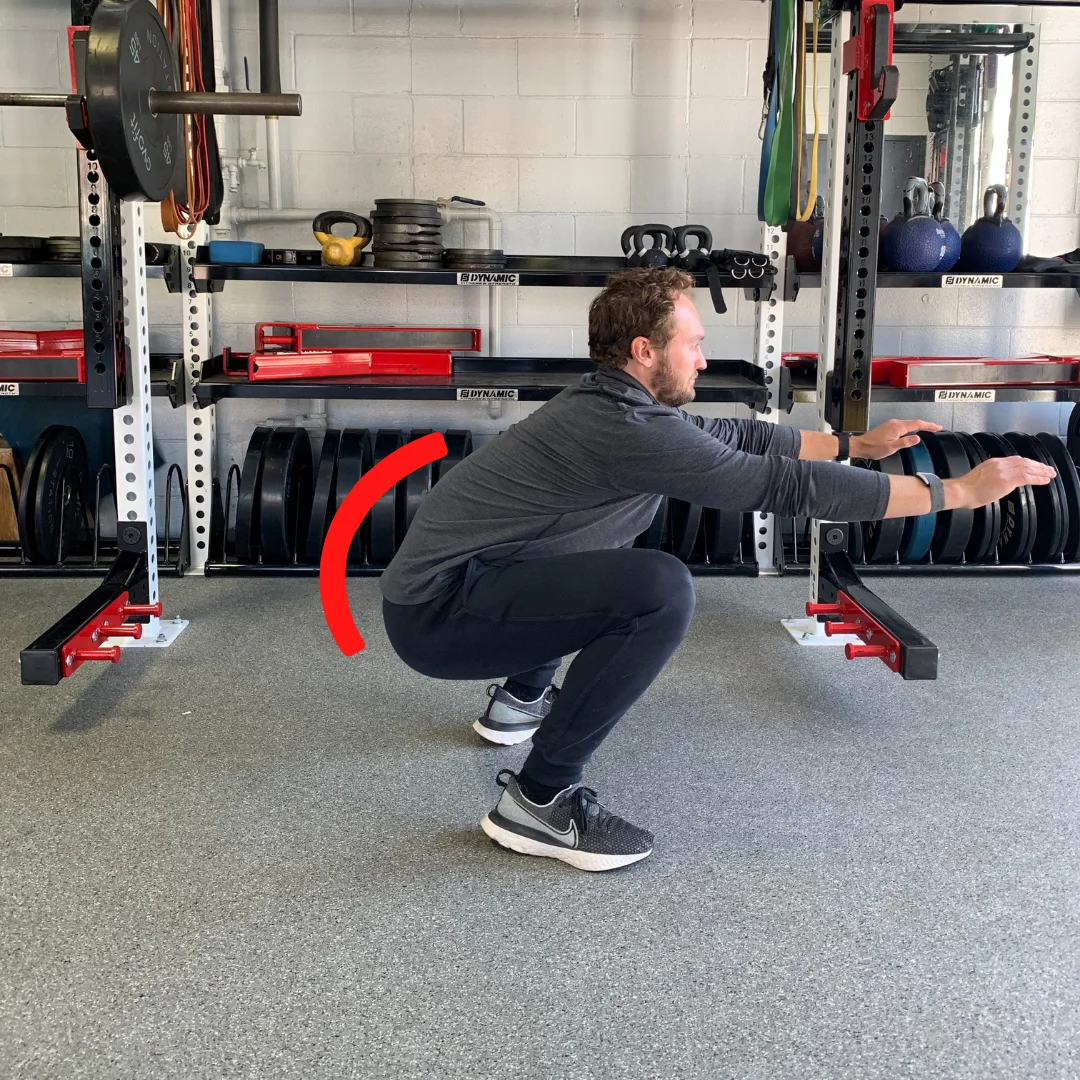
Mobility Requirements of the Squat
It’s All in the Hips
Start with the hips. To achieve a full depth squat, our femurs (thigh bone) need to produce adequate external rotation to move about the pelvis. If the femur is unable to rotate around the hip socket it will inevitably “run out of room” as the top of the thigh bone meets the edge of the hip joint.
When hip external rotation is limited it is common for individuals to feel a “pinch” or “tightness” in the front of their hips. If an athlete continues to push their squat to full depth in this environment, the pelvis will rotate backwards to open the space at the front of the hip. When this happens the lower back simultaneously flexes to allow the motion. This is seen as the dreaded “Butt Wink.” If this type of squat is repetitively and heavily loaded, significant stress can be placed on the low back and hip joint, causing pain.
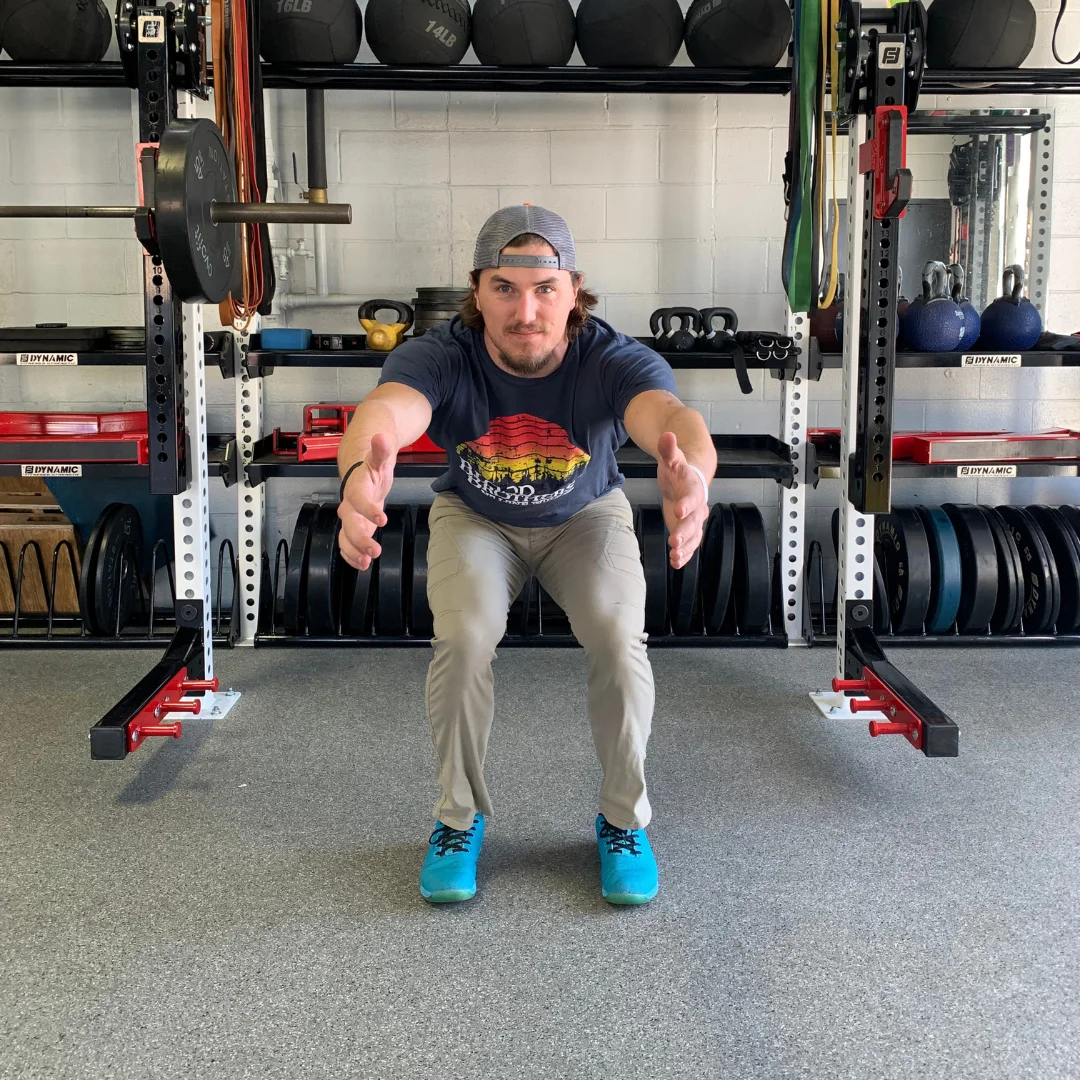
Ankle Mobility
Let’s not just blame the hips, look at your ankles! Our ankles have a significant amount of mobility in multiple directions. In terms of the squat, the motion of dorsiflexion is often the most limited and problematic.
Dorsiflexion can be seen by bringing our toes towards ourselves in the open chain.
If you squat to full depth with a relatively upright lower leg/shin, minimal dorsiflexion is occurring. Restricted dorsiflexion will not allow your femurs to adequately flex. Thus, increased motion at the pelvis and low back will occur. Again, the dreaded “Butt Wink” appears.
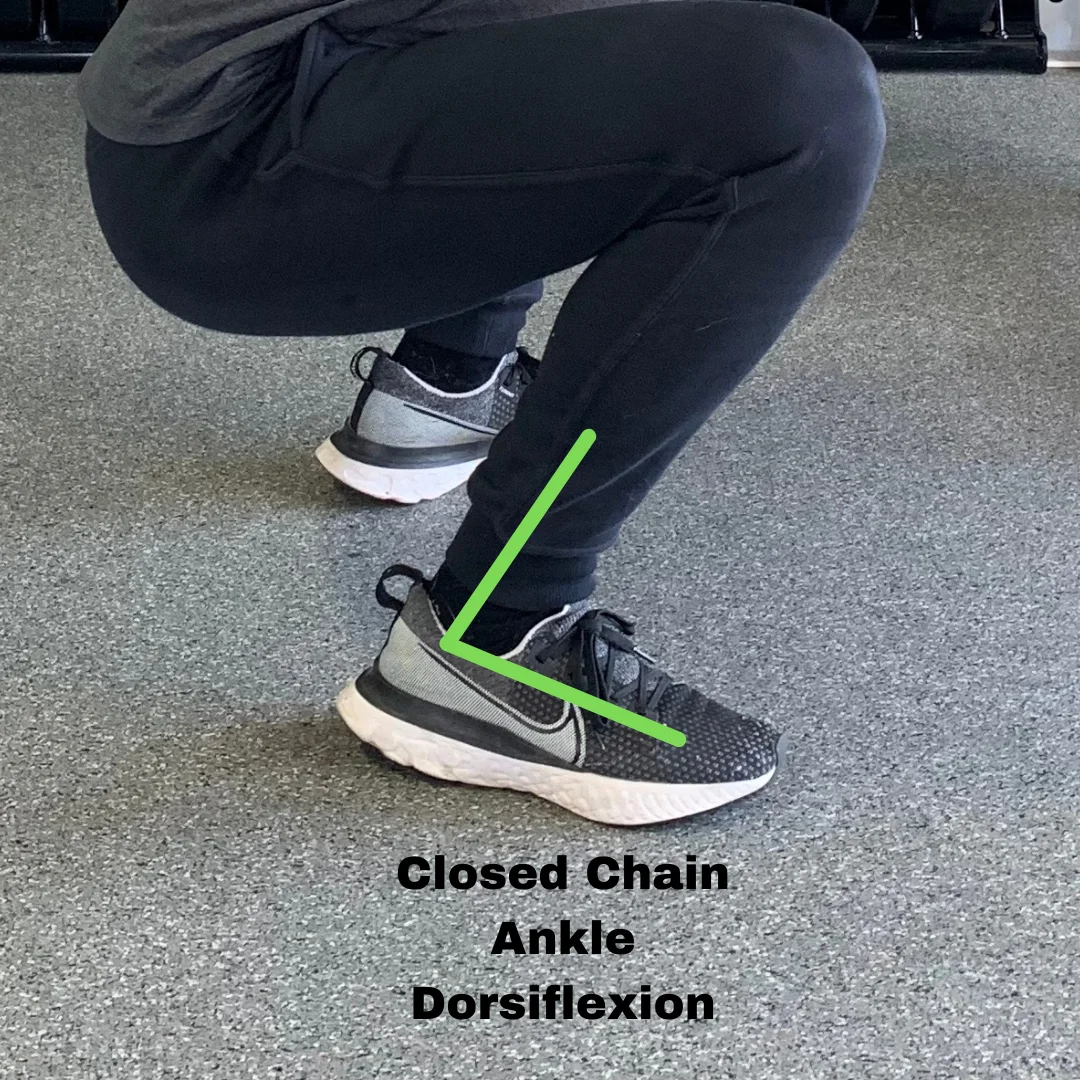
Motor Control During the Squat
Core Brace
Not all athletes and active humans that display a “Butt Wink” squat have mobility restrictions. Their primary impairment is motor control. Motor control is the ability of our muscles to move our bodies about our joints in a succent and efficient manner. Strength and muscle activation also fall into this category of impairment. If there is not enough strength in a muscle group, compensatory movements can and will occur. During the squat, spinal stability, control, and core strength heavily impacts the position bottom position of the movement.
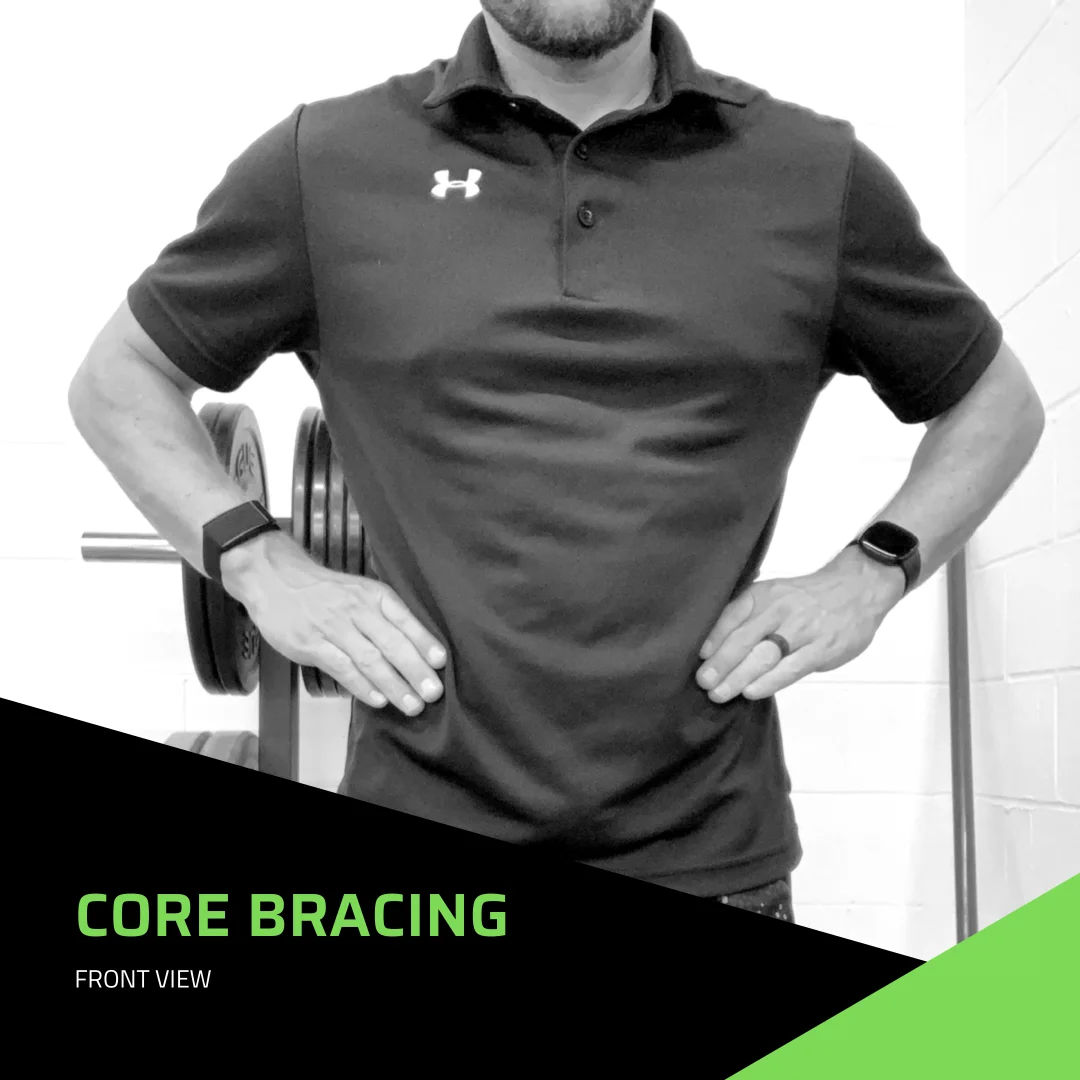
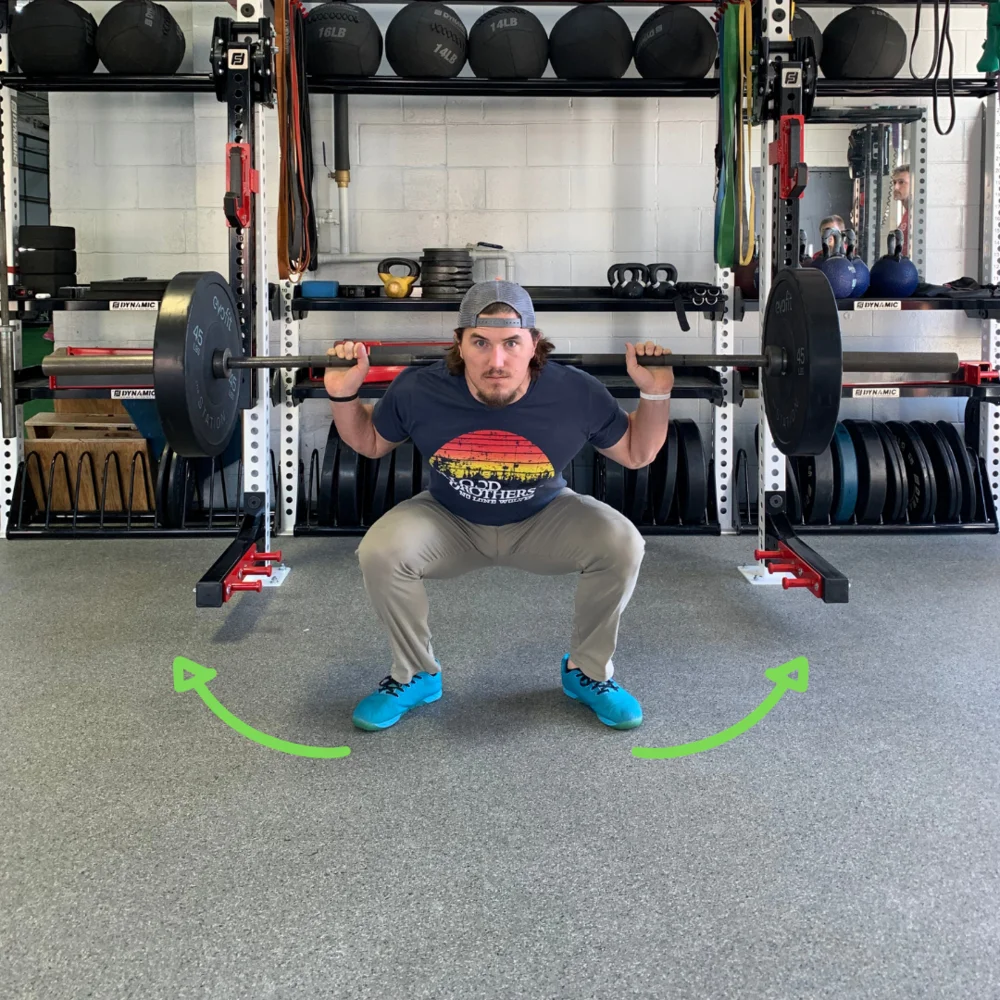
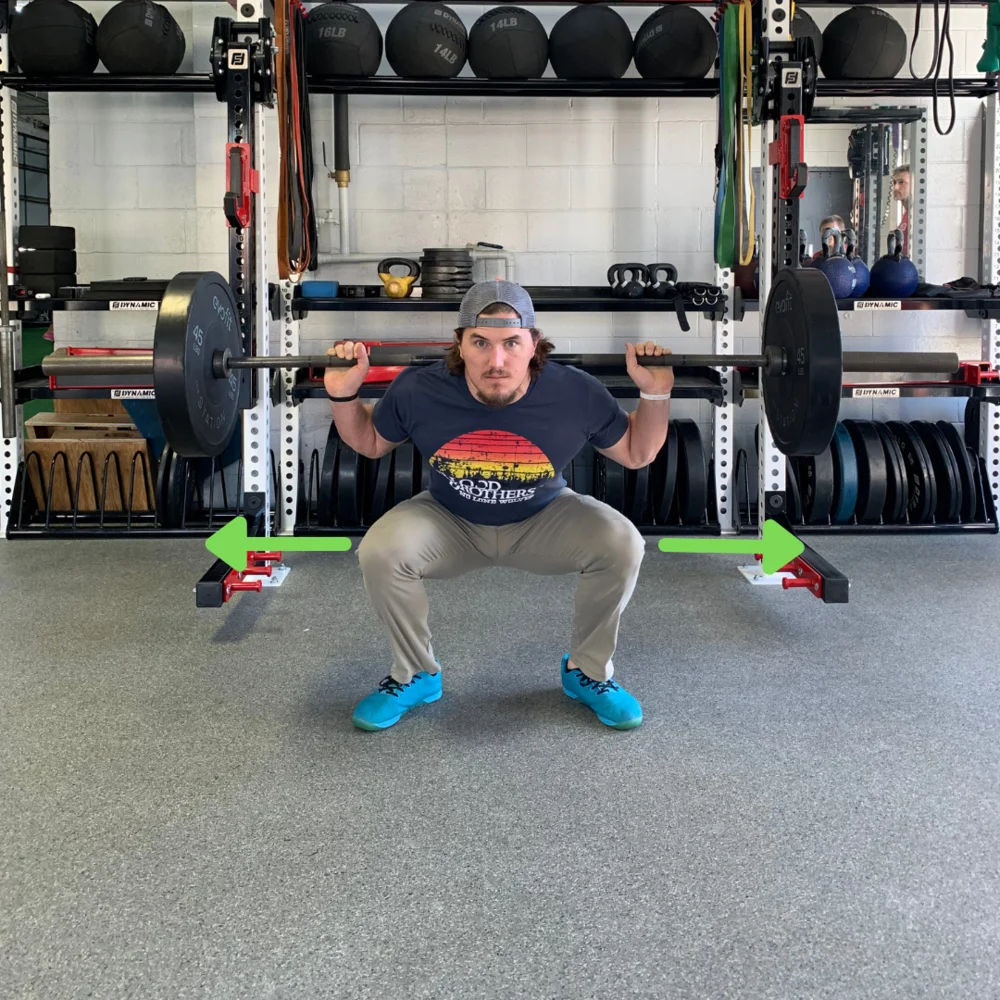
Squat Cues
Finally, gluteal strength and activation is vital for a well-controlled and high performing squat. If an athlete has adequate hip external rotation but is unable to contract his glutes to produce this range of motion during the squat, the “Butt Wink” may occur. Performing progressive glute strengthening and using cues such as, “Screw your feet into the ground,” and “Drive your knees out,” can improve squat alignment and performance.
As you can see, many factors attribute to the “Butt Wink” squat fault. Focusing on your specific restrictions and weaknesses can efficiently decrease your pain and improve your ability to squat during fitness and life.
To rid your squats of the “Butt Wink” and Outperform Your Pain, find a local performance physiotherapist or Contact Us at Vital Force Physio: (513) 716-5105, drvranic@vitalforcephysio.com
Movement is Vital for a healthy body and Your Body is a Force to be reckoned with,
Dr. Bryan Vranic, PT, DPT, CSCS
Please consult your Physical Therapist, Physician or Healthcare Provider before starting any new exercise program.
This article is not intended to diagnose or treat any injuries, impairments or diseases. Please contact your Physical Therapist, Physician or qualified Healthcare Provider for more information and before starting any new exercise/rehabilitation program.


